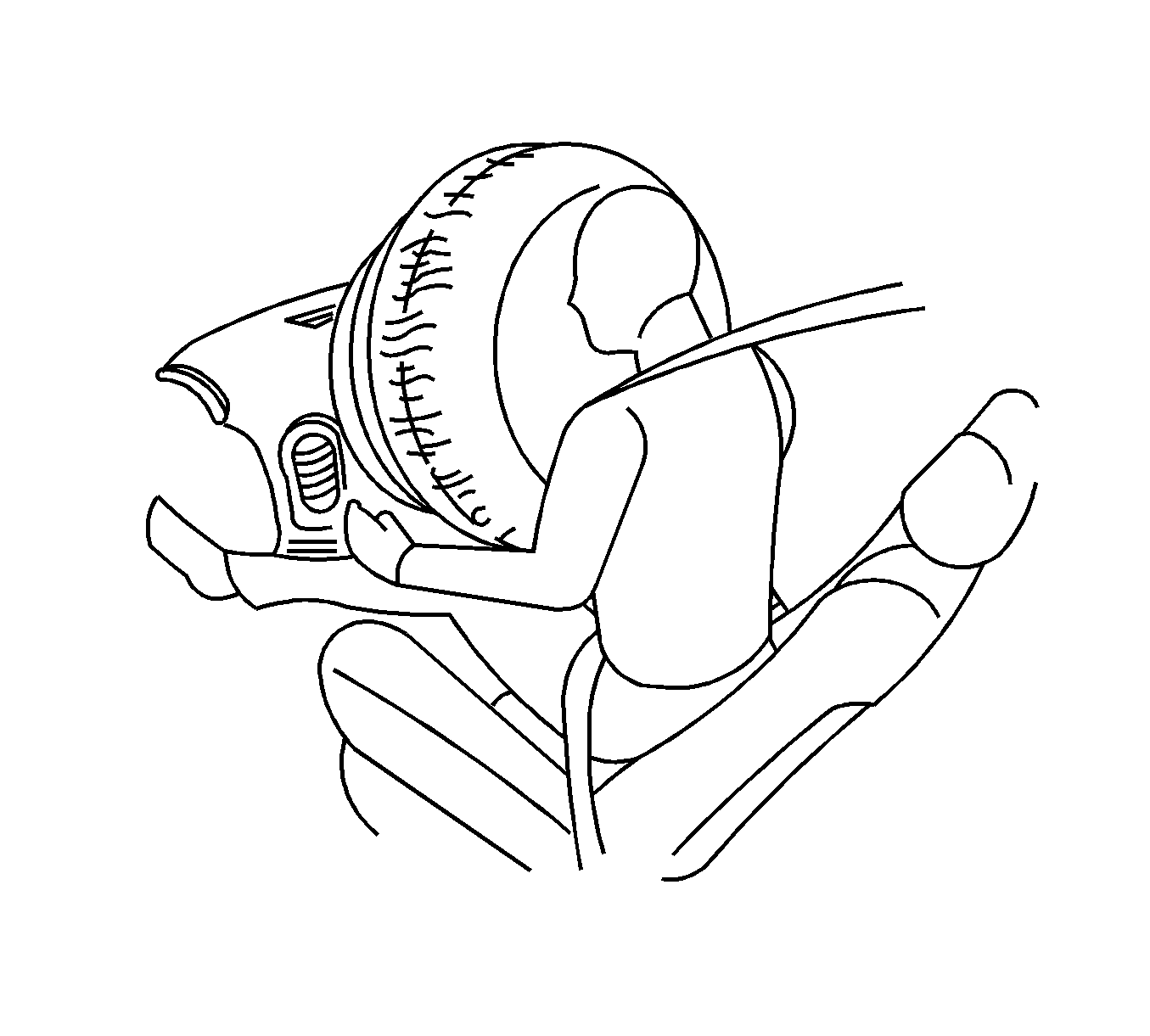
The supplemental inflatable restraints (SIR) is safety device used in conjunction with the seat belts. The air bag does not replace the function of the seatbelt. The driver and the passengers must always fasten their seat belts adjust them for a proper fit. The SIR is designed to protect the driver and the front seat passenger in the event of a significant frontal impact to the vehicle. The airbags deploy if the force is applied from a direction within 30 degrees of the vehicle's centerline.
The SIR system consists of a
| • | Driver side airbag module. |
| • | Passenger side airbag module. |
| • | Driver's and front passengers seat belt pretensioners, and load limiter for some models. |
| • | Sensing and diagnostic module (SDM). |
| • | Clock spring. |
| • | Wire harness and connectors. |
| • | AIRBAG indicator on the instrument cluster. |
There are two to four separate deployment loops in the SIR system. The term loop is used because current leaves the SDM and returns to the SDM during deployment or testing. First loop is the circuit from SDM to the driver airbag and back to the SDM. Second loop is the circuit from the SDM to the passenger airbag and back to the SDM. The third and fourth loops are for right and left pretensioners.
Airbag Modules
Driver Airbag Module
Caution: Refer to SIR Caution in the Preface section.
The driver airbag module is under the center pad of the steering wheel. The driver airbag module contains an igniter charger and a gas generator to inflate the folded airbag.
The airbag contains a shorting bar, which short-circuit the driver high circuit to driver low circuit when the connector is disconnected. The shorting bar prevents current from traveling through the driver airbag module during servicing. The shorting bar is disengaged when the connector is connected.
Passenger Airbag Module
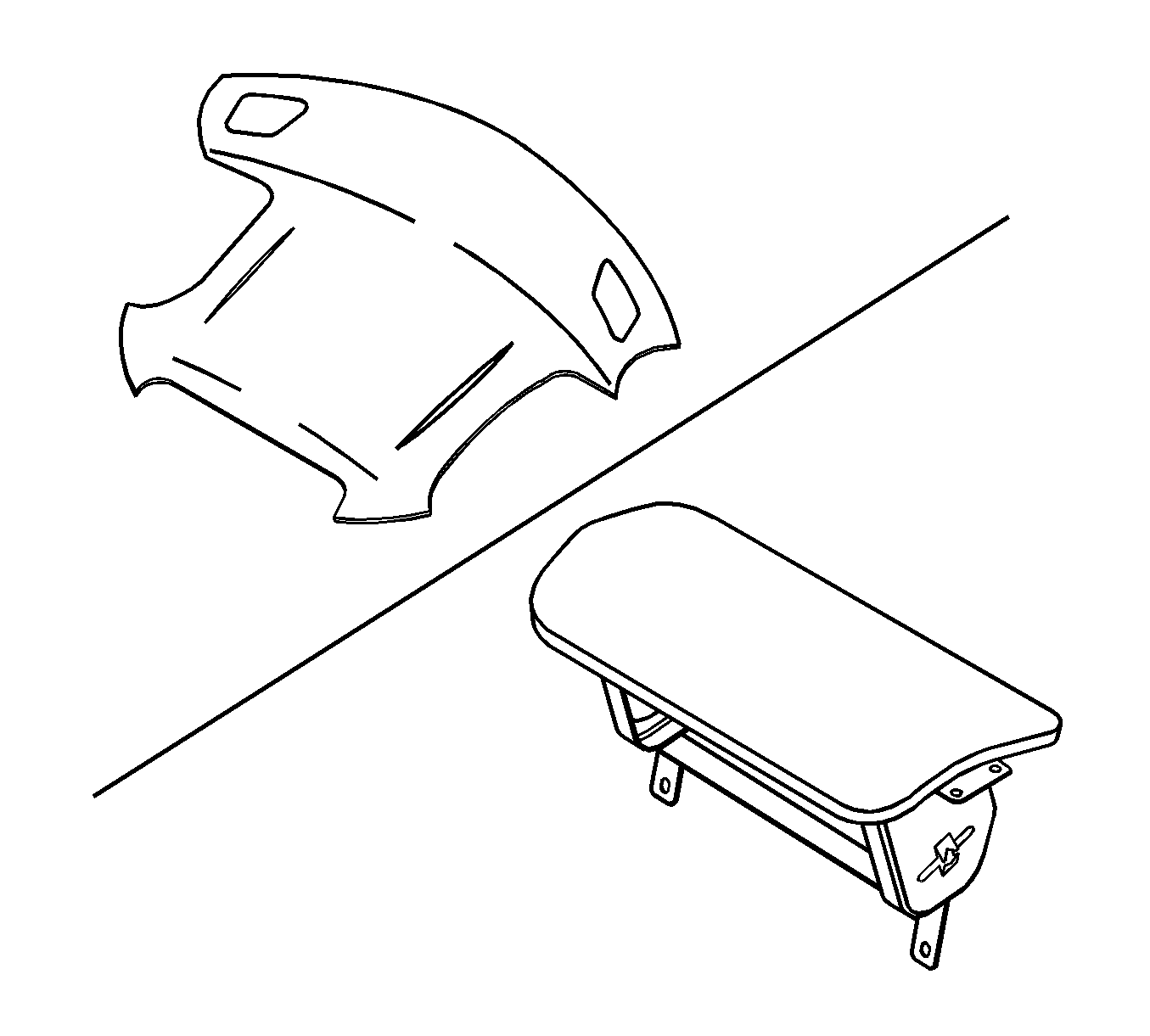
Caution: Refer to SIR Caution in the Preface section.
The passenger airbag module is on the passenger side of the instrument panel. The passenger airbag module contains an igniter charge and a gas generator to inflate the folded airbag.
The airbag contains a shorting bar, which short-circuit the passenger high circuit to passenger low circuit when the connector is disconnected. The shorting bar prevents current from traveling through the passenger airbag module during servicing. The shorting bar is disengaged when the connector is connected.
Front Seat Belt Pretensioners
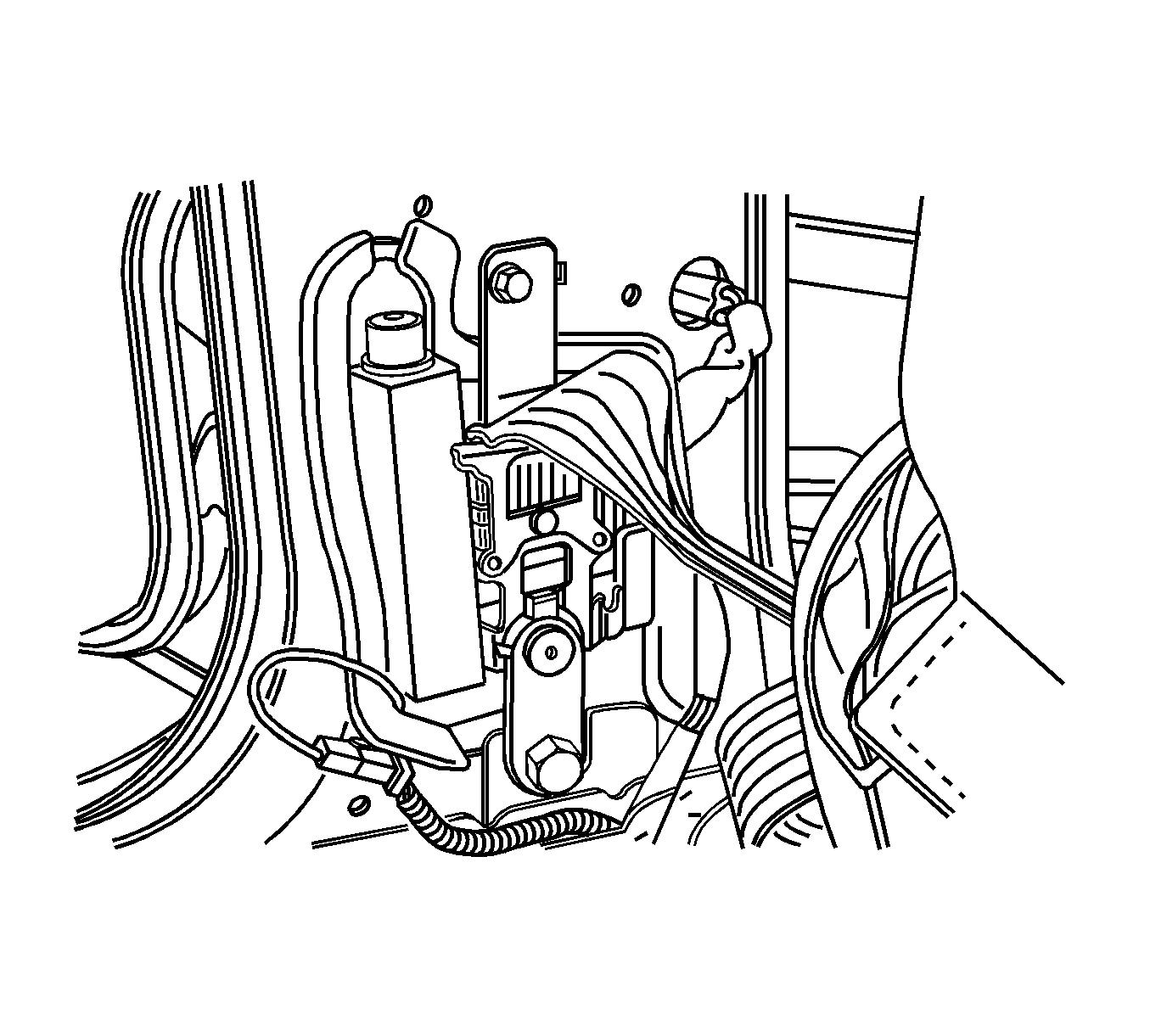
Caution: Refer to SIR Caution in the Preface section.
The seat belt pretensioners, with load limiter for some vehicles, are assembled with each front seat belt retractor to retract the seat belt webbing when accounted a frontal collision. The seat belt pretentioners are controlled by sensing and diagnostic Module (SDM). The seat belt pretensioner contains an igniter charge and a gas generator to pull the seat belt webbing. The seat belt pretensioner must be replaced after an accident that causes its activation. The seat belt pretensioner also contains a shorting bar to prevent current from traveling through the seat belt pretensioner during servicing. The shorting bar is disengaged when the connector is connected.
Sensing And Diagnostic Module (SDM)
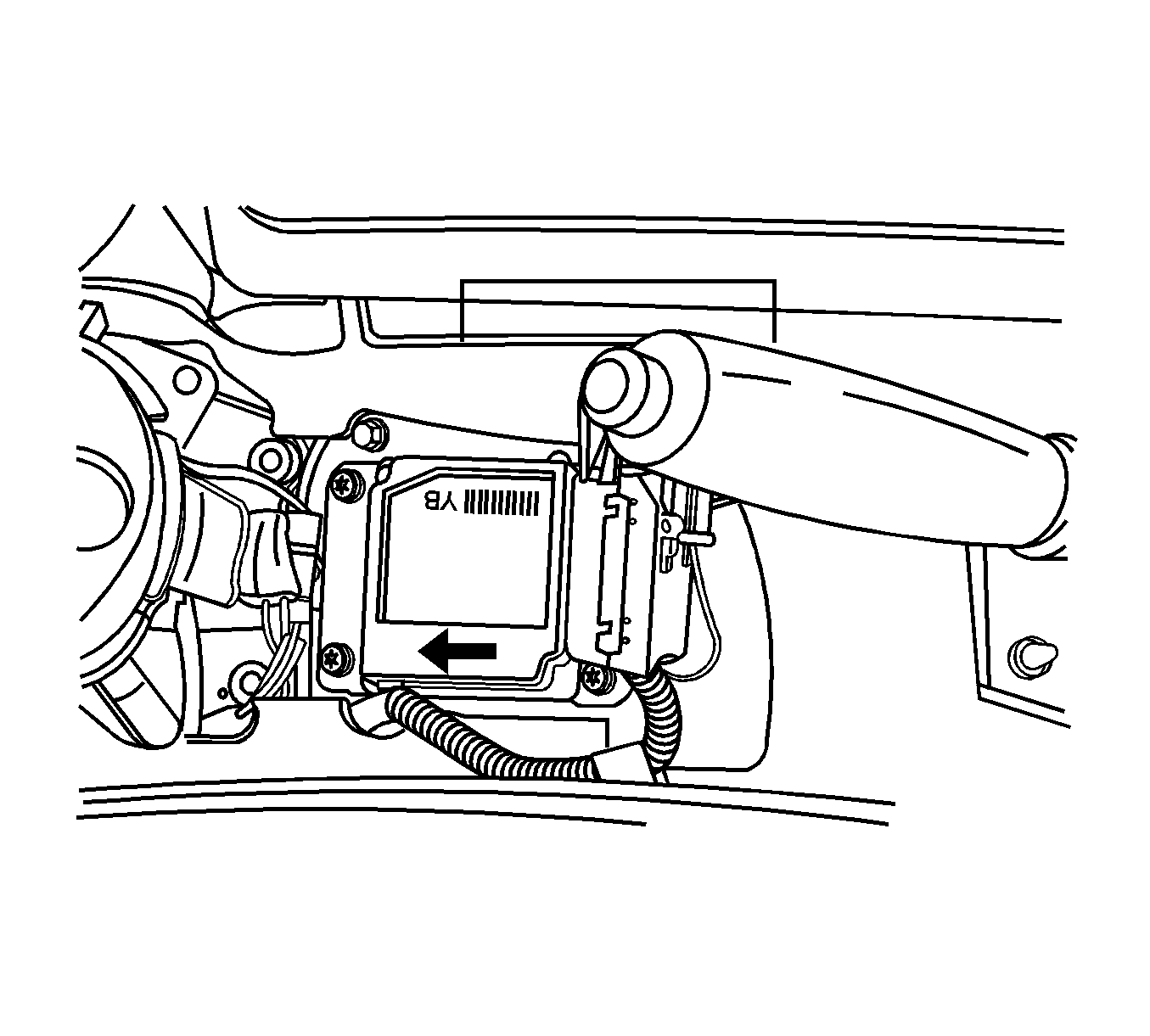
Caution: Do not strike or jolt the inflatable restraint sensing and diagnostic module (SDM). Before applying power to the SDM, make sure that it is securely fastened with the arrow facing toward the front of the vehicle. Failure to observe the correct installation procedure could cause SIR deployment, personal injury, or unnecessary SIR system repairs.
The SDM located on floor beneath the floor console assembly. The SDM performs the following functions:
| • | Monitors the supplemental restraint system (SIR) electrical components and sets a diagnostic trouble code (DTC) when malfunction is detected. |
| • | Records any faults that are discovered. |
| • | Displays SIR diagnostic trouble codes and system status information when connected to a scan tool. |
| • | Illuminates the AIRBAG indicator to alert the driver to any fault. |
| • | Provides a reserve power source to deploy the airbags and pretensioners if an accident has disabled the normal power source. |
| • | Monitor vehicle velocity changes to detect frontal impacts, which are severe enough to warrant deployment. |
| • | Causes current to flow through the airbag modules and pretensioner to cause deployment if a frontal impact of sufficient force is detected. |
| • | The SDM contains no user-serviceable parts. |
Airbag Warning Lamp

The instrument cluster contains an airbag warning indicator bulb to verify the operation of the AIRBAG indicator and sensing and diagnostic module (SDM). The SDM performs a turn-on test when the ignition is turned ON. The SDM flashes the AIRBAG indicator seven times by supplying an intermittent ground to the indicator lamp circuit. After flashing seven times, the AIRBAG indicator will turn off if no more malfunctions have been detected.
If the SDM has detected malfunctions In the internal or external circuits, which could potentially affect the operation of the supplemental restraint system (SIR), the AIRBAG indicator stays on. Some malfunctions could result in non-deployment when necessary or deployment under conditions which would no normally result in deployment.
When the SDM is not properly attached to its connector, the airbag circuit is shorted to ground because there is a shorting bar within the SDM electronic connector. The shorting bar is disengaged when proper connection is made, but if a poor connection exists the SDM connector supplies a ground to the AIRBAG indicator in dependently of the SDM, and the AIRBAG indicator turns on.
Clock Spring
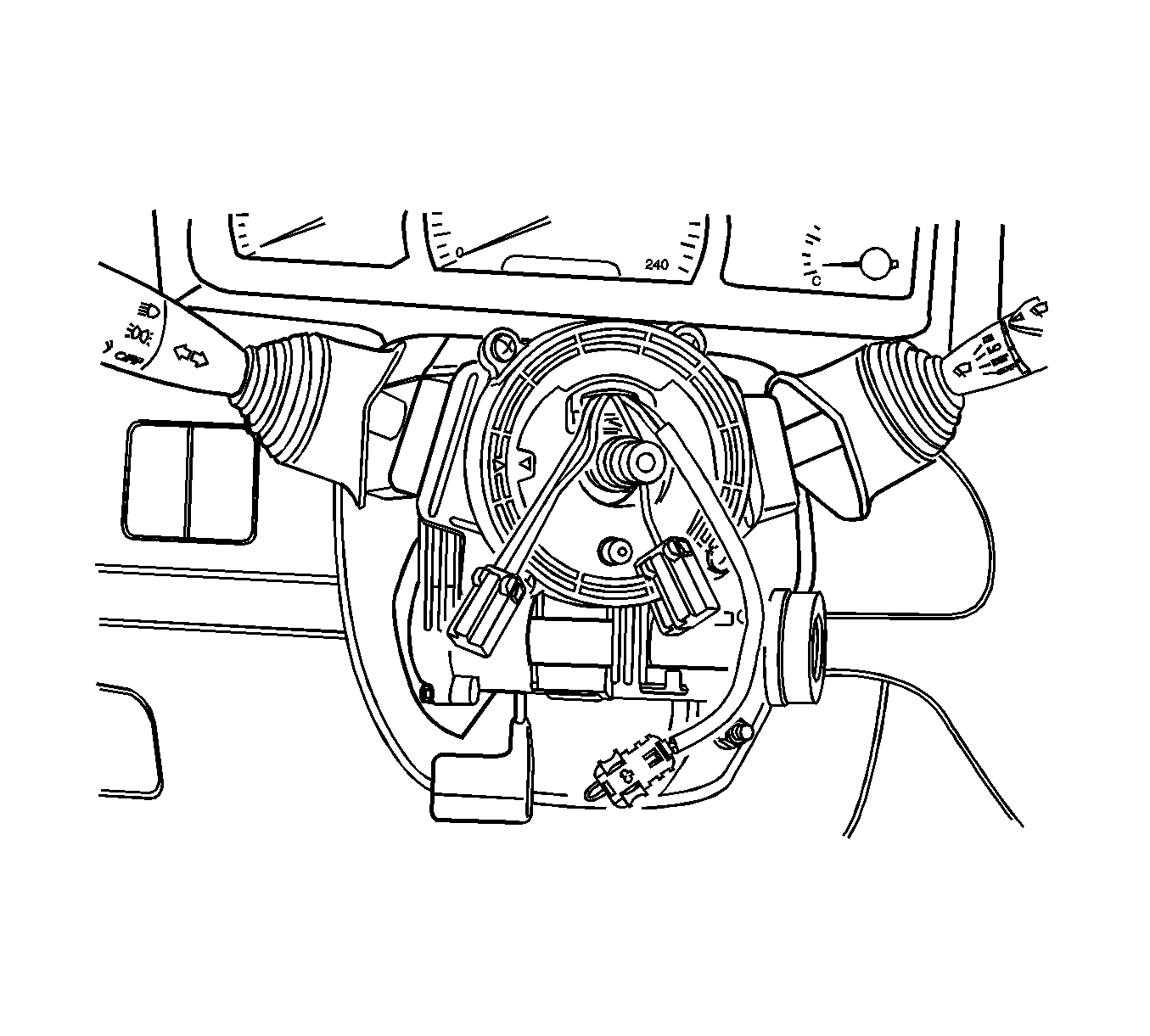
Caution: When servicing the steering column, the Supplemental Inflatable Restraint (SIR) System clock spring must be centered for proper steering wheel operation. Failure to properly center the SIR clock spring may result in reduced turnability of the steering wheel causing the vehicle to improperly maneuver and may cause the SIR system to be inoperative.
There is a coil assembly in the steering which is referred to as a clock spring because of its internal resemblance to the type of spring used in a mechanical clock. The clock spring should never be disassembled, and there is no timekeeping function. The clock spring contains two or three current-carrying coils. One of the current-carrying coils maintains continuous contact within the driver deployment loop while the steering wheel is rotated. The clock spring also contains coils that maintain continuous contact for horn and remote audio control switch circuit. Turning the steering wheel in one direction tightens the coil, and turning the steering wheel in the opposite direction loosens the coil. Do not turn the clock spring when the steering wheel is not attached. Refer to Inflatable Restraint Steering Wheel Module Coil Replacement in this section for proper installation of the clock spring.
The clock spring also includes the wiring and the connectors for the horn circuit and the driver airbag circuit. A yellow two-way connector on the lower steering column is attached to the clock spring wiring. The airbag side of the yellow connector contains a shorting bar which connects the driver high circuit to driver low circuit when the connector is disconnected. The shorting bar prevents current from travelling through the driver airbag module during servicing. The shorting bar disengaged when the clock spring connector is connected.
Wiring Harness Connectors
If the sensing and diagnostic module (SDM) electrical connector is not attached properly, a built in shorting bar will connect the wire from airbag warning lamp with the SDM ground wire. This turns on the AIRBAG indicator. To prevent deployment during servicing, additional shorting bars are located in following locations:
| • | The clock spring electrical connector at the lower steering column. |
| • | The passenger airbag module. |
| • | The driver airbag module. |
| • | The seat belt pretensioners. |
The shorting bar is only a backup safety device. Always disable the supplemental inflatable restraints (SIR) before beginning any service procedure.
